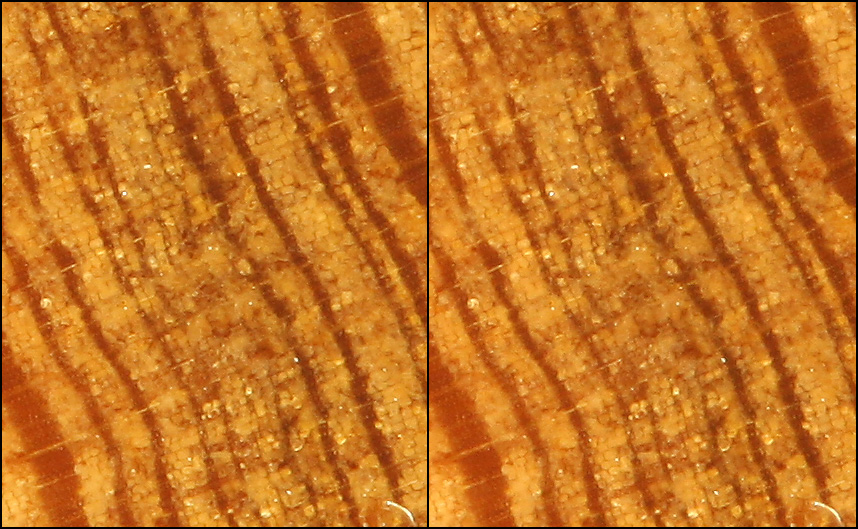I'm not disputing the observation, I'm just struggling to understand what might have been going on.Chris S. wrote:I suspect the big bugaboo was that this aquarium's glass is about 3.6mm thick, which, at around 1x magnification, seemed to impose a penalty (spherical aberration?) that I could not get around no matter how carefully I placed my camera and lights.
Here's a pair of images that I shot a few minutes ago.

These are center pixels, 1:1 at f/8 nominal (f/16 effective) through my setup with 50 mm of water. The difference is that for one of them I added 3.75 mm of glass by layering 4 microscope slides and putting them in front of the lens too. The extra glass is notably green and provides 8 more uncoated surfaces to add veiling glare. As shot, the image through the added glass is lower contrast and has a significant color shift. To compensate for that effect, I level adjusted to match the histograms as well as I could.
Probably other people's eyes can more easily spot differences in sharpness. I can see a little, but it's not something I'd notice unless I was paying very close attention.
The lack of degradation in this test is consistent with calculation, which says that the difference in spherical aberration between these two cases should be only about 0.0003 lambda across the aperture. That effect would be dwarfed by ripple in the slide thickness. The total aberration induced by the whole 50+mm of water and glass is only around 0.0039 lambda. For comparison, the corresponding difference with and without 0.17 mm coverslip for an NA 0.25 objective is 0.0517 lambda, and visible degradation doesn't kick in until maybe 0.1000 lambda. (For an NA 0.40 objective with and without cover slip, the effect is 0.3023 lambda.[*])
In case you're wondering why the current test gives such a small number, it's because spherical aberration is proportional to the fourth power of the subject-side numerical aperture (NA). The very first test that I showed, with the MP-E 65 wide open, was around NA 0.15, but this test is around NA 0.031. As a result, the spherical aberration is reduced by a factor of (0.15/0.031) raised to the fourth power. The total reduction ends up being a factor of over 500. Stopping down is a very powerful way of reducing spherical aberration!
I know, it's a lot of numbers. I'm sorry.
The point is, whatever was going on with Chris's glass, I don't think we can blame it on spherical aberration. SA is a big problem for shooting my bugs in glycerin with a microscope objective, but it's not the culprit here. I simply don't know what was causing the result that Chris S. got.
--Rik
[*] Providing these numbers to 4 digits is completely unjustified from the standpoint of accuracy. I'm doing it so they're easy to compare -- same number of digits in each.


